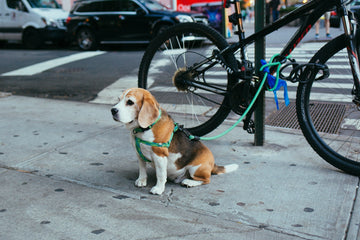When summer’s long days of freedom fade into the rhythm of the school year, it’s not just kids who feel the change—our pets do, too. After weeks of having their favorite humans around, suddenly the house grows quiet. For dogs and cats, that shift can feel confusing, sometimes even lonely.
But with a little foresight, this transition can become less of a shock and more of a smooth adjustment. After all, just like children thrive on routine, pets find comfort in knowing what comes next.
Why Pets Crave Routine
Imagine waking up every day not knowing when—or if—you’ll see your best friend. That’s what a sudden schedule change can feel like to your pet. Dogs may show their unease by chewing or barking; cats might retreat or over-groom. These behaviors aren’t “bad”—they’re simply signals that they miss you and crave consistency.
The good news? A stable routine is a powerful antidote.
Small Steps, Big Difference
Instead of an abrupt goodbye to summer freedom, start easing your pet into the new routine before the school bell rings. Shift walk times earlier, shorten play sessions gradually, and practice leaving the house for short periods. Each small step makes the bigger change less intimidating.
Even something as simple as offering a toy or treat reserved only for “alone time” can turn absence into anticipation.
Morning Moments That Matter
Yes, mornings can be a blur of lunchboxes and backpacks—but don’t forget the wagging tail or curious eyes waiting for you. Just ten minutes of play or a brisk walk can set the tone for your pet’s entire day.
A well-exercised dog is more likely to nap peacefully than nibble on the couch. A cat who’s had a good chase with a feather toy is more content to curl up in the sun. And if you already take your dog for a quick stroll, consider using a sturdy, hands-free leash like the Bobopal dog leash—it makes juggling backpacks, coffee cups, and excited pups a little easier.
Midday Support
Not every pet adjusts easily to long hours alone. If possible, arrange a neighbor’s check-in, a dog walker, or even doggy daycare. These options break up the day with companionship and stimulation.
If outside help isn’t realistic, enrichment toys, puzzle feeders, or a cozy perch by the window can turn solitude into exploration.
After-School Reunions
Just as children spill through the door eager to share their day, your pet is waiting, too. Evening becomes the perfect time for reconnection—whether it’s a long walk, a game of fetch, or simply curling up together.
Involving kids in these rituals benefits everyone. Assigning small pet-care tasks fosters empathy and responsibility in children while reassuring your pet that they’re still part of the family team.
When Anxiety Runs Deeper
Some pets struggle more intensely, showing signs like excessive barking, destructive chewing, or withdrawal. For them, start with gradual departures, calming background sounds, or pheromone diffusers. If these don’t help, a consultation with your vet or a trainer can offer tailored solutions.
Keep Health & Happiness in Focus
Routine isn’t only about walks and meals—it’s also about long-term well-being. Stick to regular feeding times, keep up with grooming, and don’t let busy schedules push aside vet visits. Even short bursts of exercise—a 15-minute morning walk or a playful tug-of-war before dinner—can work wonders for mood and health.
A Season of Adjustment, Not Stress
Back-to-school doesn’t have to mean back to stress. With gentle adjustments, consistent care, and little moments of connection, your pet will not only cope but thrive.
And while you’re helping kids settle into new routines, remember your furry family members are learning, too. With patience and love, every wag, purr, and cuddle will remind you: they’re not just adapting—they’re growing with you.
✨ Final Thought: The school year brings change, but it can also bring deeper bonds. Your pet’s world may shift, but with your guidance, their sense of security remains unshaken.






